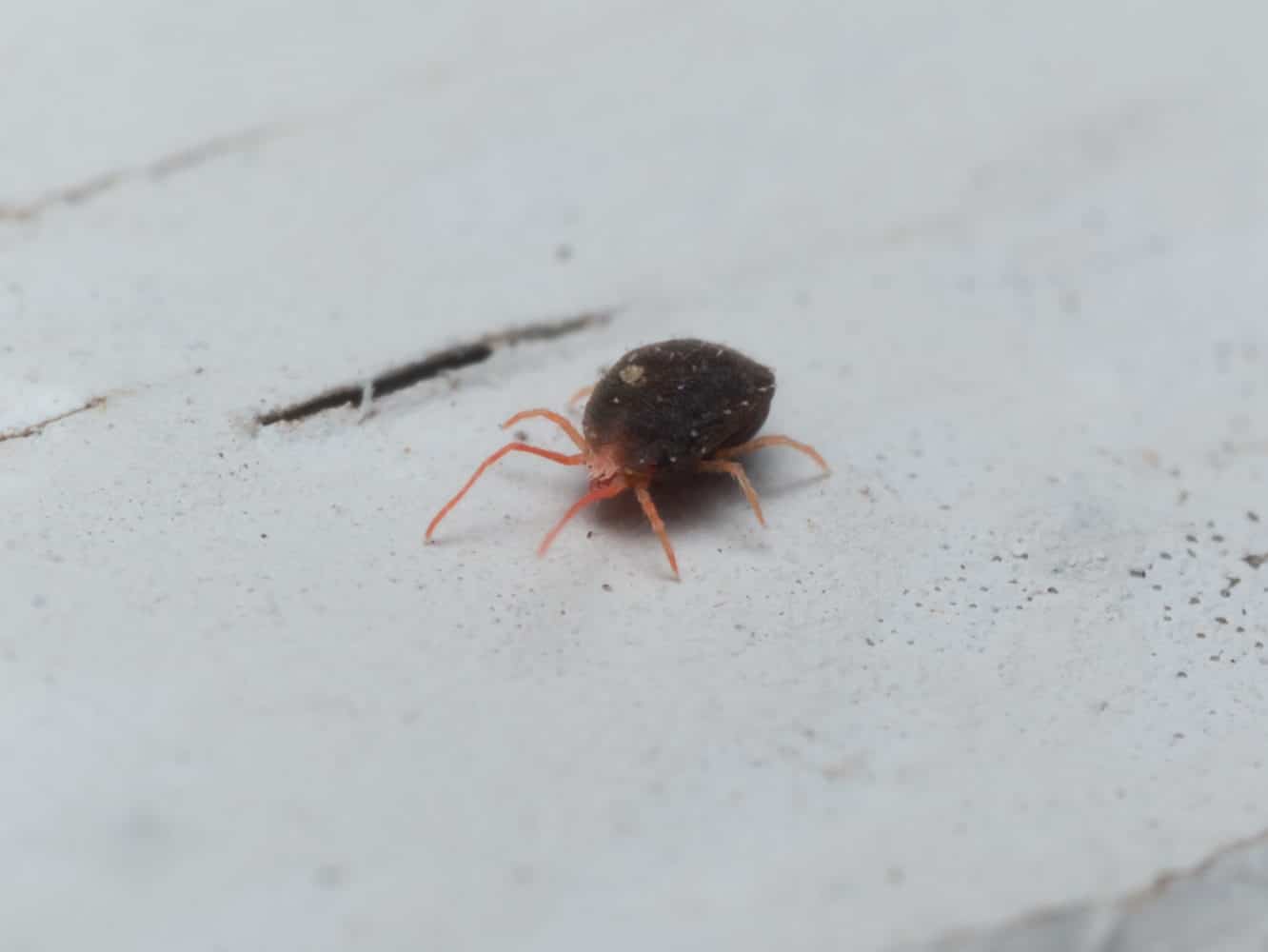Clover Mites
Clover mites are dark reddish-brown arachnids that are smaller than a pinhead. They’re 1/64” long, and soft, oval, and flattened from top to bottom. Their defining characteristic is the very long pair of front legs that extend forward like antennae as they crawl.
Clover mite problem? Check out our HomeCare Green Program — covers 60 different household pests!
What is the Clover Mite's Diet?
Clover mites like to eat sap from clover, well-fertilized grass, and other plants. They are known to eat over 200 different plant species.
What is the Clover Mite Reproductive Cycle?
Clover mites are parthenogenetic, which means they develop from unfertilized eggs and their entire population is female. Overwintering eggs usually hatch around April 1, or when temperatures are greater than 45 degrees F. They typically complete one generation before they estivate for summer. Estivation is a type a warm-weather hibernation. Clover mites prefer cooler weather, and usually emerge again in the fall to complete another generation. The eggs then overwinter in a dry, protected location. However, the mites can be found in all stages of growth. They will not reproduce in indoor conditions.
Where do Clover Mites Live?
Clover mites are encountered as household pests in early summer and in fall when they enter homes by mistake. Otherwise, they exclusively live outdoors. Spring infestations usually occur because of the sudden growth of lush vegetation around the perimeter of a house, which is delicious to a clover mite. Clover mite populations then move inside in the fall when the plants they feed on start to die. Once inside a home, they will die within a few days of dehydration.
Why are Clover Mites a Pest?
Clover mites are harmless and can’t bite or sting. They aren’t a health concern for humans, and they don’t cause major damage to homes. But clover mites can be a huge nuisance to homeowners when they invade structures in large numbers. When an adult clover mite is crushed, it leaves behind a red stain, especially on items like curtains, wallpaper, rugs, and other light-colored furniture. Because of this, clover mites should be vacuumed up and not smashed.
Ready to Schedule a Service?

